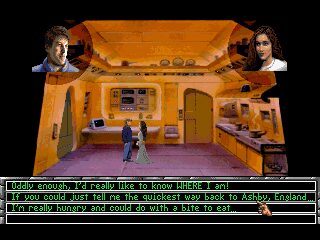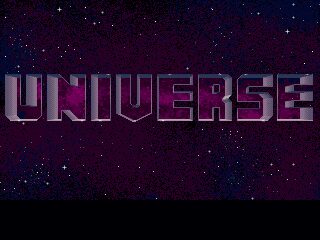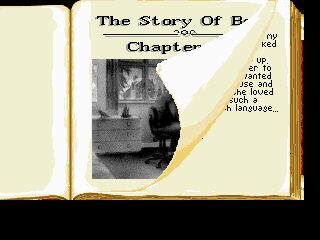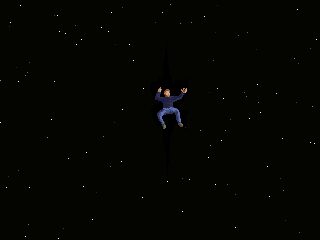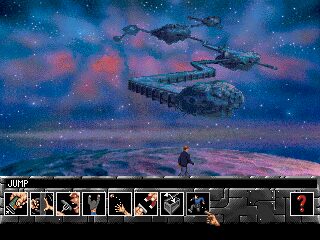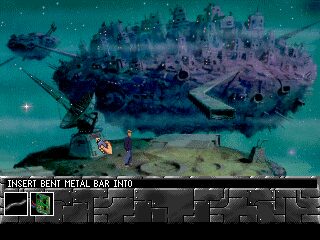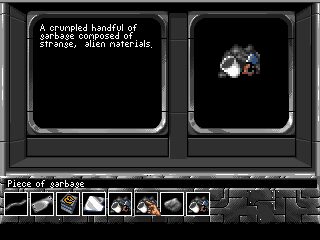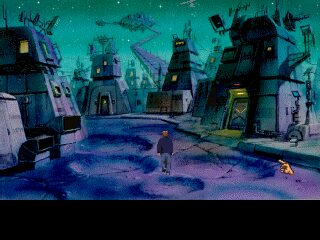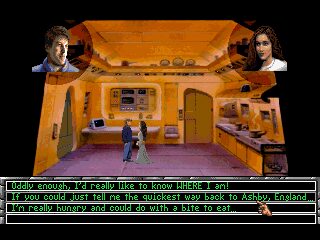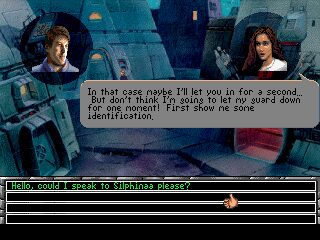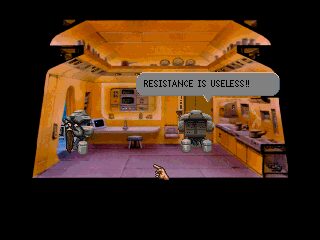Universe is a graphic adventure game created and published in 1994 by Core Design, specifically for the Amiga, and later ported to MS-DOS as well.
The title was designed by Gary Bottomley-Mason and Rolf M. Mohr, with the team aiming to create a large-scale point-and-click game that could rival PC adventures of the time, such as those by LucasArts and Sierra. The game is the second adventure created by Core Design, and it was intended to be the sequel to Curse of Enchantia, but in the end, it was decided it would be a standalone game.
The story centers around Boris Verne, a young teenager who, after tampering with his uncle's strange invention, is transported to a parallel universe on the brink of collapse. This alternate galaxy is ruled by an oppressive empire, and Boris quickly finds himself in the middle of a resistance movement fighting to restore freedom. The narrative, though following traditional science fiction tropes, introduces a variety of quirky characters and alien cultures, giving the universe a distinctive flavor.
Gameplay follows the classic point-and-click formula, with a user interface that features an icon-based command system. Players interact with the environment by clicking on objects, picking up items, combining inventory, and talking to characters to solve puzzles and progress through the game. Unlike many contemporaries, Universe was notable for its smooth interface and relatively intuitive puzzle design, avoiding the more obscure logic seen in some other games of the genre.
One of the most technically impressive aspects of Universe was its graphical engine. Backgrounds were hand-drawn and digitized, with many scenes featuring detailed sci-fi settings, alien cities, and spaceships, all enhancing the immersion. Since the backgrounds of the PC versions were rendered in 256 colors, the developers found a way to use the same backgrounds on the Amiga as well. This was achieved by using an innovative technique called SPAC (Super Pre-Adjusted Colour). The Amiga was able to show only 32 colors (or 64 in extra half-bright mode). However, with a clever technique, programmer Gary Antcliffe found a way to change up to 16 colors every raster line, essentially achieving nearly 256 colors on screen. It's a pity SPAC was not used on other games.
Though Universe never received a sequel and remained relatively obscure compared to Core Design’s later blockbuster Tomb Raider, it still holds a place in the memory of many Amiga fans. The game received generally favorable reviews in Amiga magazines for its technical achievements, engaging story, and polished presentation.
Despite being released at a time when the Amiga platform was in decline, Universe stands out as one of the more ambitious graphic adventures created exclusively for the system. It remains a testament to what talented developers could achieve on limited hardware and is fondly remembered by fans of the genre.

